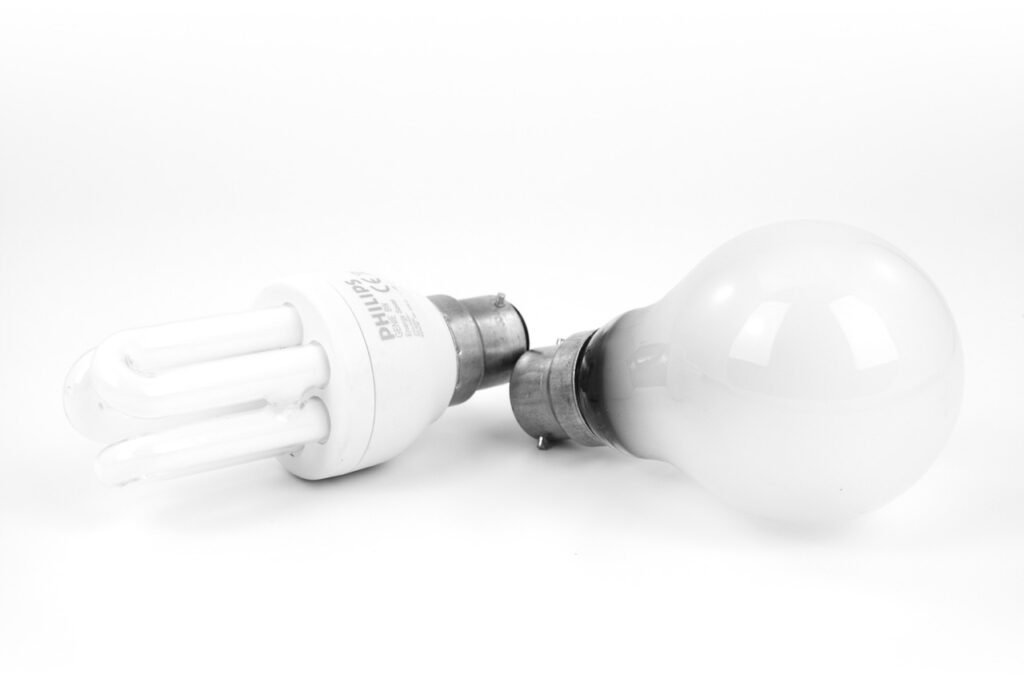Are you looking to enhance the efficiency of your lighting system? Look no further! In this article, we will explore the world of advanced dimming system techniques and how they can revolutionize the way you control your lights. From reducing energy consumption to creating the perfect ambiance, these tips are sure to brighten up your space in more ways than one. So, let’s shed some light on how you can optimize your lighting efficiency through advanced dimming system techniques.
Optimizing Lighting Efficiency Through Advanced Dimming System Techniques

This image is property of pixabay.com.
1. Introduction
Definition of lighting efficiency
Lighting efficiency refers to the measure of how effectively and efficiently lighting fixtures and systems convert electrical energy into usable light. It is typically measured in lumens per watt (lm/W), with higher values indicating greater efficiency.
Importance of optimizing lighting efficiency
Optimizing lighting efficiency is crucial for several reasons. Firstly, it helps conserve energy, reduce electricity costs, and minimize environmental impact. Secondly, it improves lighting quality, enhances visual comfort, and promotes occupant well-being. Lastly, optimizing lighting efficiency is a proactive step towards achieving sustainability goals and meeting energy efficiency regulations.
Overview of advanced dimming system techniques
Advanced dimming system techniques offer innovative ways to optimize lighting efficiency. These techniques go beyond traditional on/off controls and allow for dynamic lighting adjustments based on occupancy, natural light levels, and user preferences. By integrating smart controls, wireless connectivity options, and compatibility with various lighting technologies, these systems enable flexible and efficient lighting management.
2. Understanding Lighting Efficiency
Definition of lighting efficiency
As mentioned earlier, lighting efficiency measures how effectively lighting systems convert electrical energy into usable light. It is determined by the efficacy of light sources, the performance of lighting fixtures, and the control mechanisms employed.
Factors affecting lighting efficiency
Several factors influence lighting efficiency. The choice of light source, such as LED or fluorescent, plays a significant role. Higher-efficiency light sources, like LEDs, produce more light output while consuming less energy. The design and performance of lighting fixtures, including the type and placement of lamps, also impact efficiency. Additionally, the control mechanisms used, such as dimming systems, affect how lighting is adjusted, leading to further efficiency gains.
Benefits of improving lighting efficiency
Improving lighting efficiency offers various benefits. It reduces energy consumption and lowers electricity bills. By reducing the demand for electricity, it also helps minimize carbon emissions and contributes to a greener environment. Apart from energy savings, optimizing lighting efficiency enhances lighting quality, reduces eye strain, and improves occupant comfort and productivity.

This image is property of pixabay.com.
3. Basics of Dimming Systems
Definition of dimming systems
Dimming systems are lighting control mechanisms that allow users to adjust the intensity of light output from lamps or fixtures. They provide the ability to create different lighting scenes or levels, cater to specific tasks or moods, and respond to daylight changes.
Types of dimming systems
There are various types of dimming systems available, including analog, digital, and wireless options. Analog dimming systems use a voltage or current control method to vary light levels. Digital dimming systems use pulse-width modulation (PWM), digital addressable lighting interface (DALI), or digital multiplex (DMX) control protocols. Wireless dimming systems utilize radio frequency (RF) or Bluetooth technology to communicate wirelessly with fixtures.
Working principle of dimming systems
The working principle of dimming systems involves altering the power supply to lighting fixtures. By reducing or increasing the voltage or current supplied, the light output is adjusted accordingly. Analog dimming systems use variable resistors or transformers to regulate the voltage or current. Digital dimming systems send control signals to lighting fixtures, telling them to dim or brighten based on the desired lighting scene. Wireless dimming systems allow for remote control of lighting intensity without the need for physical wiring.
4. Advanced Dimming System Techniques
Compatibility with different lighting technologies
Advanced dimming systems are designed to be compatible with various lighting technologies, including LEDs, fluorescent lamps, and high-intensity discharge (HID) lamps. This compatibility ensures that the dimming system can effectively control and optimize the light output of different light sources, maximizing energy efficiency and flexibility.
Integration with smart lighting controls
Advanced dimming system techniques involve integrating smart lighting controls, such as occupancy sensors, daylight sensors, and time-based scheduling. These controls allow for dynamic adjustments based on occupancy levels and natural light availability. For example, the system can automatically dim lights in unoccupied areas or reduce brightness when daylight is sufficient, further reducing energy consumption.
Wireless connectivity options
Advanced dimming systems often incorporate wireless connectivity options, enabling seamless control and management of lighting across a facility. Wireless connectivity allows for centralized control and monitoring, remote access, and the ability to easily reconfigure lighting settings. This flexibility makes it convenient to optimize lighting efficiency while offering enhanced user control and customization.

This image is property of pixabay.com.
5. Energy Savings with Advanced Dimming Systems
Dimming vs. on/off control
Compared to traditional on/off control, dimming provides significant energy savings. By adjusting lighting levels to match actual needs, dimming reduces energy consumption and waste. In areas with varying lighting requirements, such as offices, conference rooms, or retail spaces, dimming systems allow for precise control, ensuring the right amount of light is provided when and where it is needed.
Reduction of energy consumption
Advanced dimming systems contribute to energy savings by reducing the overall energy consumption of lighting systems. By dimming lights during times of low activity or sufficient natural light, unused energy is conserved. Dimming systems are particularly effective in spaces with fluctuating lighting needs, such as classrooms, hospitals, and warehouses, where energy savings can be substantial.
Impact on energy bills
Optimizing lighting efficiency through advanced dimming systems has a direct impact on energy bills. By reducing energy consumption, businesses and households can significantly lower their electricity costs. The energy savings achieved by implementing advanced dimming systems can result in shorter payback periods and a positive return on investment over time.
6. Lighting Quality and Comfort
Benefits of dimming for visual comfort
Dimming systems enhance visual comfort by providing adjustable lighting levels that match users’ preferences and tasks. By allowing individuals to create personalized lighting scenes, dimming promotes a calming and relaxing ambiance. It also reduces eye strain by preventing excessively bright or dim lighting conditions, improving overall visual comfort.
Reduction of glare and flicker
Advanced dimming systems can help reduce glare and flicker, two common issues associated with poor lighting. Glare occurs when excessively bright light sources cause discomfort and reduce visibility. By dimming lights to optimal levels, glare can be minimized, enhancing the overall visual experience. Flicker, which is the rapid and perceptible variation in light output, can also be reduced through precise dimming control, ensuring a stable and flicker-free lighting environment.
Color rendering and temperature control
Advanced dimming systems allow for precise control of color rendering and temperature, offering customizable lighting experiences. By adjusting the intensity and color temperature of lights, these systems can enhance the aesthetic appeal of spaces, create desired atmospheres, and improve visual clarity. This level of control is particularly beneficial in applications like art galleries, restaurants, and retail stores where lighting plays a crucial role in setting the ambiance.
7. Environmental and Sustainability Considerations
Reduced carbon emissions
Optimizing lighting efficiency through advanced dimming systems leads to a significant reduction in carbon emissions. By conserving energy and using it more effectively, fewer fossil fuels are burned to generate electricity. This reduction in carbon emissions contributes to combating climate change and promoting environmental sustainability.
Extended lifespan of lighting fixtures
Dimming systems can extend the lifespan of lighting fixtures by reducing the stress on lamps and other components. By operating lights at lower levels, their operating hours are extended, resulting in fewer replacements and waste. This not only saves replacement costs but also reduces the environmental impact associated with manufacturing and disposing of lighting fixtures.
Integration with renewable energy sources
Advanced dimming systems can be integrated with renewable energy sources such as solar panels or wind turbines. By coordinating dimming levels with available renewable energy supply, these systems maximize the utilization of clean, sustainable power. This integration further reduces reliance on non-renewable energy sources and promotes a cleaner energy mix.
8. Health and Well-being Benefits
Circadian rhythm synchronization
Advanced dimming systems can support the synchronization of circadian rhythms, the 24-hour biological cycles that regulate our sleep-wake patterns. By gradually adjusting lighting levels and color temperature throughout the day, the systems mimic natural lighting conditions, enhancing our body’s response to light and promoting healthier sleep patterns.
Enhanced occupant performance
Optimized lighting through advanced dimming systems has been shown to improve occupant performance and productivity. By providing appropriate lighting levels for specific tasks or environments, dimming systems reduce eye strain and fatigue, enabling individuals to focus better and perform at their best. This benefit is particularly valuable in workplaces, schools, and healthcare settings.
Promotion of a healthy indoor environment
Proper lighting can contribute to a healthy indoor environment by reducing visual discomfort, promoting relaxation, and enhancing overall well-being. Advanced dimming systems allow users to create lighting scenes that match their desired ambiance, promoting a positive and calming atmosphere. This can have a positive impact on mood, mental health, and overall satisfaction in various indoor spaces.
9. Implementation Considerations
Initial cost and return on investment
When considering the implementation of advanced dimming systems, it is essential to evaluate the initial cost and potential return on investment. While advanced dimming systems may have higher upfront costs compared to conventional lighting controls, the significant energy savings and other benefits they provide can lead to a favorable return on investment in the long run.
Compatibility with existing lighting infrastructure
Before implementing an advanced dimming system, it is crucial to assess its compatibility with existing lighting infrastructure. Retrofitting existing fixtures to accommodate dimming capabilities may be necessary. Additionally, compatibility with control protocols, wiring systems, and fixtures must be considered to ensure a seamless integration and optimal performance.
Training and maintenance requirements
Proper training and maintenance are vital for the successful implementation and continued performance of advanced dimming systems. Adequate training ensures that users understand the system’s capabilities and can efficiently utilize its features. Regular maintenance, including cleaning, inspection, and software updates, helps ensure optimal system performance and longevity.
10. Case Studies: Successful Implementations
Real-world examples of advanced dimming system applications
Several real-world examples exist where advanced dimming systems have been successfully implemented. These include commercial buildings, educational institutions, healthcare facilities, and public spaces. For instance, a commercial office building implemented an advanced dimming system, resulting in significant energy savings, improved occupant satisfaction, and heightened visual comfort.
Quantifiable benefits achieved
Quantifiable benefits of advanced dimming systems include energy savings of up to 50%, reduced carbon emissions, and improved lighting quality. Studies have shown that the smart use of dimming systems can result in substantial cost savings on energy bills while enhancing overall occupant well-being and productivity.
Lessons learned and best practices
Implementing advanced dimming systems effectively requires careful planning and consideration of best practices. Some key lessons learned include thorough evaluation of lighting needs, selecting the appropriate dimming systems for specific applications, and engaging professional lighting designers. Incorporating user feedback and continuously monitoring and adjusting system settings can also enhance the long-term performance and satisfaction with advanced dimming systems.
In conclusion, optimizing lighting efficiency through advanced dimming system techniques offers several benefits, including energy savings, improved lighting quality, environmental sustainability, and enhanced occupant well-being. By understanding the basics of dimming systems, exploring advanced techniques, and considering implementation considerations, businesses and individuals can make informed decisions to embrace efficient and effective lighting solutions. Real-life case studies and quantifiable benefits reinforce the positive results that advanced dimming systems can provide, making them a compelling option for optimizing lighting efficiency.



